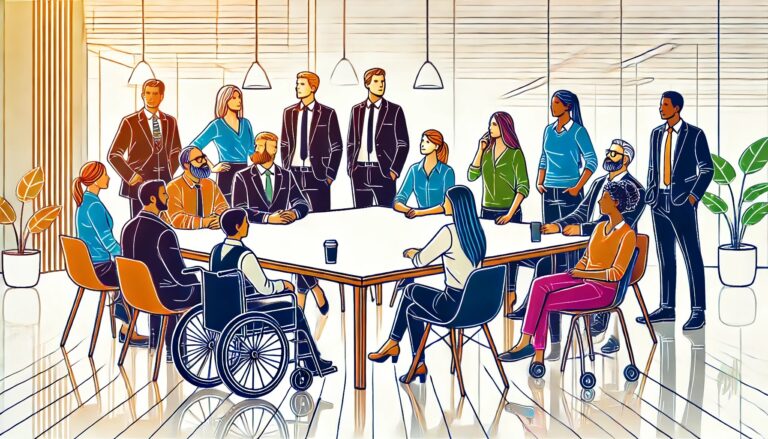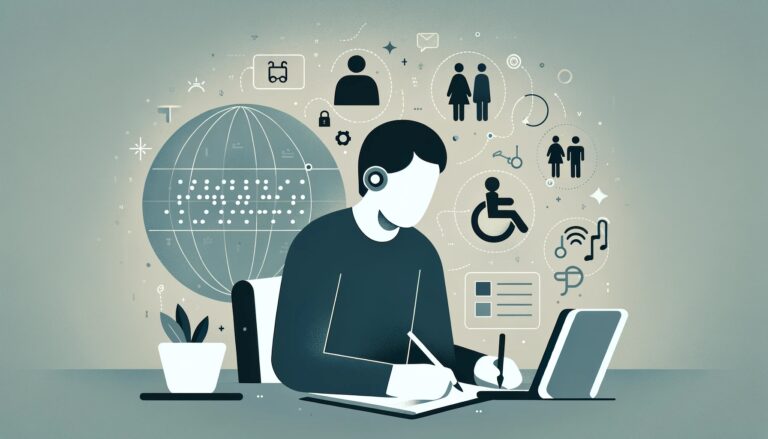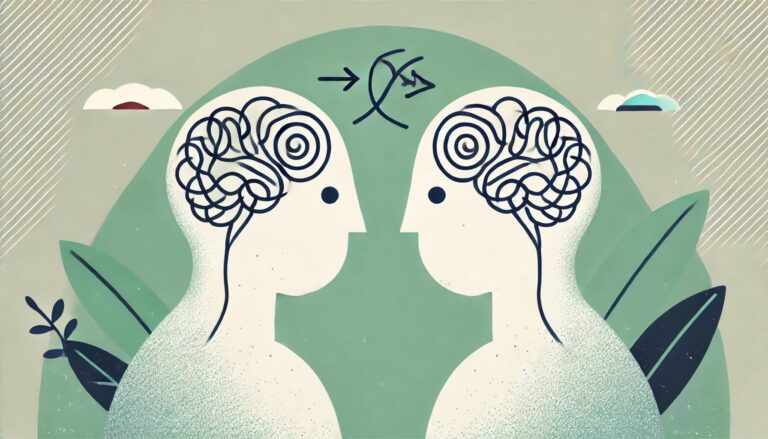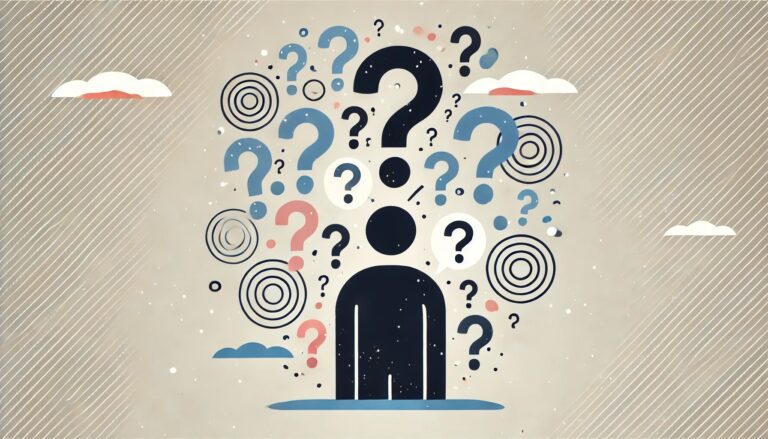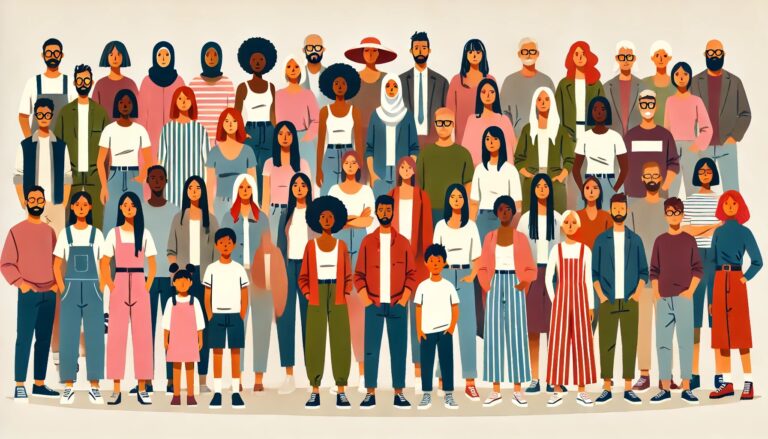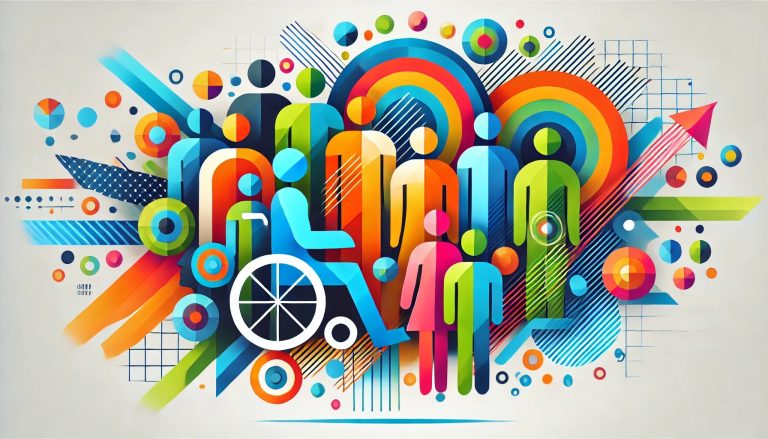
70 IRL Examples Of Inclusive Language
When discussing inclusive language, many immediately think of avoiding gendered pronouns—and rightly so, as it’s a crucial starting point for integrating inclusivity into our communication. However, the concept extends far beyond this. Biased language subtly infiltrates our daily lives, often in ways we barely notice. The impact of our linguistic choices is profound; we can instigate meaningful change through these everyday decisions.
This guide aims to illuminate the nuances of inclusive language through real-life examples of inclusive language and their non-inclusive counterparts. It reminds us how easily we can fall into the trap of stereotypes and how simple it can be to embrace a more inclusive perspective.
For obvious reasons, these are just a few examples of inclusive languages and do not cover everything, but they can be an introductory guide to the practical applications of inclusive language designed to engage, inform, and inspire a shift toward more thoughtful communication.
Stereotypes And Biases
Let’s face it: we all carry biases, often picked up from our surroundings, the stories and images we’ve been fed by media about specific places, peoples, and groups. These biases usually show up as stereotypes and generalizations—thinking Italians always argue, Germans are overly precise, African Americans are loud, or South Americans are lazy. These stereotypes oversimplify people’s identities and limit our worldview to a single, narrow perspective. And it’s surprisingly easy to slip into these habits when writing or interacting with others.
Below are examples of how stereotype-driven language can appear alongside alternatives that embrace a more inclusive approach.
| Stereotypical Statements | Stereotypical Sentences In Context | Contextualized Inclusive Alternatives |
|---|---|---|
| Germans are always efficient and well-organized. | Having these punctual Germans in our office really sets the bar high for meeting start times. | Our office benefits from everyone’s commitment to punctuality, enhancing productivity across the board. |
| Italians have a natural talent for cooking, especially pasta. | You can always count on the Italians to turn any meal into a feast, just like at our last team dinner. | Every team member brings something special to our meals, creating a rich tapestry of culinary diversity. |
| British people are reserved and struggle to express emotions. | It’s refreshing to work with Brits who approach negotiations with such diplomatic reserve. | The attention to detail in our project plans reflects the collective effort of our diverse team. |
| Brazilians are inherently skilled in football. | With the Brazilians on our sports team, the energy and enthusiasm for football is palpable. | The enthusiasm for sports among our team members contributes to a lively and energetic atmosphere. |
| People from the Middle East have extensive knowledge about the oil industry. | Let’s ask him for his input on the oil market trends; after all, he’s from the Middle East. | His insights on the oil market trends are invaluable, thanks to his extensive research and expertise in the field. |
| Africans have a natural inclination towards music and rhythm. | Our team’s creative brainstorming sessions are so vibrant, no doubt an influence of the colorful Indian culture. | Our brainstorming sessions are vibrant and productive, thanks to the wide range of perspectives everyone brings. |
| French individuals have an innate sense of fashion. | The French touch in our design team really brings elegance and style to our projects. | The elegance and style evident in our projects are a testament to the diverse aesthetic sensibilities of our team. |
| Russians are well-adapted to cold climates. | Russian resilience is something you can really count on in challenging project phases. | Optimism is a key trait of our team dynamic, inspired by individuals from various backgrounds. |
| Americans generally lack awareness of other cultures. | The American can-do attitude brings a lot of optimism to our team’s dynamic. | The lively spirit of our office parties reflects the joy and camaraderie shared by all colleagues. |
| Asians are naturally good at math. | Our project plans are so detailed, thanks to the meticulous Japanese approach to organization. | The diplomatic approach to negotiations by our team members fosters a constructive and respectful dialogue. |
Gender and Orientation
Language has a sneaky way of reinforcing old gender norms, often without us even realizing it. It’s woven so deeply into the fabric of our culture that it becomes almost invisible. Consider this: how frequently have you heard a woman described as “bossy” or terms like “man-hours” tossed around in work conversations? There’s also the habit of using masculine terms as the default to include everyone or labeling someone as an “alpha” in a way that leans heavily on outdated male stereotypes.
It’s a reflection of how gendered language is not just about words—it’s about the ideas and prejudices they carry and perpetuate. These are some non-inclusive language examples and their inclusive language examples counterparts that challenge these norms and speak in ways that welcome and include everyone.
| Stereotypical Statements Related to Gender and Orientation | Inclusive Alternatives Emphasizing Individual Contributions |
|---|---|
| It’s handy to have men in the office when we need something heavy lifted. | Our office benefits from everyone’s willingness to pitch in, regardless of the task’s physical demands. |
| Our team’s attention to detail has improved since we hired more women. | The team’s attention to detail is a result of individual strengths and contributions, not gender. |
| Having a gay man on the team means our office decor is always on point. | Our office decor reflects the diverse tastes and styles of all team members, celebrating our collective creativity. |
| The straight guys bring a no-nonsense approach to our sales strategy. | A straightforward approach to our sales strategy comes from a wide range of experiences, not just the men on our team. |
| Women in leadership roles make our office environment more empathetic. | Empathy in leadership is valued and cultivated in all our team members, fostering a supportive office environment. |
| Men in tech positions ensure we’re always at the cutting edge of innovation. | Innovation in our tech projects is driven by the diverse expertise and creativity of the entire team. |
| Lesbian team members add a sense of strength and resilience to our workforce. | Strength and resilience are qualities we all admire and strive for, not tied to any specific gender or orientation. |
| Our project management is so efficient, thanks to the straight women on our team. | Efficiency in project management is achieved through the skills and organization of all team members, regardless of gender. |
| The presence of gay women in our team brings a unique perspective to creative discussions. | Creative discussions are enriched by the unique perspectives of each team member, valuing diversity of thought. |
| Having bisexual individuals in our group ensures a broad spectrum of viewpoints. | A broad spectrum of viewpoints in our group is encouraged, coming from individuals’ varied life experiences and insights. |

Ability
Sometimes, our everyday language can exclude or offend without even noticing. This happens because society habitually labels physical conditions or mental traits with negative connotations rather than recognizing them as aspects of diversity and uses these words to explain bad situations and behaviors. For instance, saying someone “turns a blind eye” to ignore issues, calling unconventional behavior “mental,” or describing a hectic situation as “crazy.” Often used casually, these terms have deep roots in perceptions that don’t respect the full range of human experience.
Below a list of examples of non-inclusive sentences and their respective inclusive language ones that can make everyone feel seen and respected.
| Stereotypical Statements Related to Ability | Inclusive Alternatives Emphasizing Individual Contributions |
|---|---|
| Having people with physical disabilities in our office improves our diversity quotas. | Our office values diversity, focusing on the unique skills and perspectives each individual brings, regardless of their physical abilities. |
| The blind employee brings a unique way of thinking to our problem-solving sessions. | Unique ways of thinking and problem-solving enrich our team’s capabilities, stemming from a wide range of personal experiences and perspectives. |
| Our deaf team member’s ability to focus in noisy environments is unmatched. | The ability to focus in varied environments is a valued trait among all our team members, contributing to our collective productivity. |
| People without disabilities tend to get through physical tasks more quickly. | Efficiency in completing physical tasks is recognized as a contribution from team members who leverage their strengths and collaborate effectively. |
| Employees with autism are great for roles that require attention to detail and routine. | Attention to detail and a strong sense of routine are qualities we find invaluable, and we nurture these traits across our entire team. |
| Those who use wheelchairs always have such a positive outlook, it’s inspiring. | A positive outlook and resilience are traits that inspire our team, coming from individuals’ diverse experiences and attitudes. |
| Our team members with dyslexia bring creative solutions that others might not think of. | Creative problem-solving is a cornerstone of our success, encouraged and celebrated in all team members, regardless of learning differences. |
| Individuals with ADHD add dynamic energy and creativity to our projects. | Dynamic energy and creativity are traits that drive our projects forward, and we value the contributions of all team members in bringing this energy. |
| The physical resilience of our staff without disabilities helps in our fast-paced work environment. | Physical resilience is one of many factors that contribute to handling a fast-paced work environment, alongside mental agility and teamwork. |
| People with mental health challenges provide deep insights into user empathy in our design work. | Deep insights into user experience and empathy are crucial to our design work, and we draw on the diverse perspectives and experiences of our entire team. |
Religion
In our conversations and writing, it’s easy to overlook how deeply personal and significant religion and beliefs are to each individual. Often, without intending to, we might use phrases or make references that oversimplify or misrepresent someone’s faith or spirituality. This can happen when we use religious terms or symbols casually in everyday language or when we make assumptions about someone’s beliefs based on their background or appearance. Imagine casually using phrases like “Oh, it’s like a Bible to him” to refer to something unrelated to faith or making assumptions about holidays someone celebrates without asking.
This table juxtaposes non-inclusive statements that may unintentionally emphasize a person’s religious identity as their primary attribute with inclusive alternatives that respect the person’s profession or role as their primary identifier, acknowledging religious identity as one aspect of their diverse identity.
| Non-Inclusive Language | Inclusive Language |
|---|---|
| “He is a Muslim programmer.” | “He is a programmer who practices Islam.” |
| “The Christian lawyer will handle it.” | “The lawyer, who is Christian, will handle it.” |
| “Our company celebrates Christmas as a universal holiday.” | “Our company recognizes diverse holiday celebrations during the winter season.” |
| “She’s a Jewish banker.” | “She’s a banker and she observes Judaism.” |
| “That Buddhist teacher gives great advice.” | “That teacher, who follows Buddhism, gives great advice.” |
| “The Hindu festival will affect our work schedule.” | “The upcoming festival, celebrated by those who practice Hinduism, will affect our work schedule.” |
| “We have a Sikh taxi driver.” | “Our taxi driver practices Sikhism.” |
| “The atheist scientist disproved that theory.” | “The scientist, who identifies as atheist, disproved that theory.” |
| “All employees must attend the Christmas party.” | “All employees are invited to the end-of-year celebration.” |
| “She wears a headscarf because she’s Muslim.” | “She wears a headscarf as part of her Islamic faith.” |
Acquired Diversity
Acquired diversity involves the experiences and backgrounds individuals gather throughout their lives, such as cultural exposure, education, and professional experiences. We may inadvertently overlook or simplify these aspects through our language and interactions. For instance, we may assume that someone’s achievements are solely due to their age, class, or geographic origin or pigeonhole their capabilities based on their veteran status or the university they attended. This overlooks the nuanced and layered nature of individual experiences contributing to a person’s unique perspective and skills.
This table contrasts non-inclusive statements that may inadvertently stereotype individuals based on age, class, or veteran status with inclusive alternatives that recognize their abilities, experiences, or challenges without making assumptions based on these characteristics.
| Non-Inclusive Language | Inclusive Language |
|---|---|
| “The young intern always has energy.” | “The intern brings a lot of energy to the team.” |
| “Our older employees aren’t tech-savvy.” | “Employees have varied levels of experience with technology.” |
| “He’s just a blue-collar worker.” | “He works in a skilled trade.” |
| “She comes from a low-income background.” | “She has overcome significant economic challenges.” |
| “The rich client can afford it.” | “The client has the means to afford it.” |
| “Our team is mostly middle-aged.” | “Our team has a wide range of life experiences.” |
| “He’s a war veteran, so he’s tough.” | “His experience as a veteran has contributed to his resilience.” |
| “The young lady at the front desk will help you.” | “The person at the front desk will help you.” |
| “That old man doesn’t understand our system.” | “He’s still learning how our system works.” |
| “Ex-convicts struggle to find good jobs.” | “People with criminal records face barriers to employment.” |
Social Motivation

Social motivation—the reasons behind our actions, how we interact with others, and what drives us to contribute to society—can be as diverse as humanity. Yet, it’s easy to fall into the trap of oversimplifying or misjudging someone’s motivations based on narrow perceptions. For instance, attributing a young person’s activism solely to a desire for social media attention or assuming that someone’s charitable work is just a resume booster overlooks the complexity and sincerity of their intentions. It’s crucial to remember that people are motivated by many factors, including deeply held values, personal experiences, and a genuine desire to make a difference. Recognizing the layers and legitimacy behind why individuals engage in social activities encourages a deeper appreciation of how people contribute to the fabric of our communities.
This table contrasts statements that might unintentionally convey narrow or stereotypical views on why people are motivated in specific ways with inclusive alternatives that recognize a broader spectrum of motivations and contributions without making assumptions based on social backgrounds or life circumstances. These IRL examples of inclusive language are a great way to understand the importance of placing each word within context.
| Non-Inclusive Language | Inclusive Language |
|---|---|
| “He’s so ambitious, unlike others in his community.” | “He’s ambitious and a great example of leadership in action.” |
| “She’s driven by money, like most people from her area.” | “She’s motivated by financial success and personal achievement.” |
| “They’re from a poor neighborhood, so they work harder than others.” | “They have a strong work ethic and are highly motivated to succeed.” |
| “People from that country are always looking for a better life elsewhere.” | “Individuals from diverse backgrounds seek opportunities for growth and improvement.” |
| “Young people today are only interested in social media fame.” | “Young individuals are navigating a variety of aspirations, including digital engagement and recognition.” |
| “Older generations don’t care about making a difference.” | “People of all ages are interested in creating positive change in their communities.” |
| “She must be working this job because she needs to support her family.” | “She brings valuable skills and dedication to her role.” |
| “People with disabilities are so inspirational for doing everyday things.” | “Individuals with disabilities demonstrate resilience and competence in their daily activities.” |
| “Immigrants work these jobs because they can’t get anything better.” | “Immigrants contribute a wide range of skills and talents to the workforce.” |
| “He’s just volunteering to pad his resume.” | “He’s gaining valuable experience and making meaningful contributions through volunteering.” |
Origins And Nationality
Let’s talk about origins—where we come from shapes us, but it’s too easy to oversimplify someone’s background. Have you ever caught yourself or others saying, “He is Asian,” as if that’s the whole story? Such statements lump together incredibly diverse cultures, countries, and individuals, reducing rich histories to a single word. When we label someone just by a continent or region, we miss out on their unique story and the nuances of their origins. It’s like using one color to paint a masterpiece that needs a whole palette.
The following examples of inclusive language vs the non-inclusive version aim to shift the focus from broad, sweeping categories to more specific and respectful acknowledgments of individuals’ origins, promoting a more inclusive and accurate representation of diversity.
| Non-Inclusive Term | Inclusive Language Alternative |
|---|---|
| “He is Asian.” | “He is from [specific country], or his heritage is [specific heritage].” |
| “She’s African.” | “She’s from [specific African country], or her family originates from [specific region].” |
| “They’re European.” | “They’re from [specific European country], or they have [specific European] heritage.” |
| “You’re Middle Eastern.” | “You’re from [specific Middle Eastern country], or your background is [specific culture].” |
| “He’s Latino.” | “He’s from [specific Latin American country], or his family background is [specific culture].” |
| “She’s from the ghetto.” | “She’s from [name of city or community], or she grew up in [specific area].” |
| “They’re immigrants.” | “They’ve moved from [specific country], or they’re living in [new country] now.” |
| “Foreign workers” | “International employees or workers from [specific countries].” |
| “Third World countries” | “Developing countries, or countries with emerging economies.” |
| “Exotic” (referring to people) | “Unique, or with a distinctive heritage from [specific region or country].” |
How do you start using inclusive language?
After reading our examples of inclusive language, how to start with bias-free language? That’s a great sign you’re aiming for more mindful and respectful communication. Embracing inclusive language goes beyond just picking new words— it’s about actively shaping fair, welcoming, and respectful spaces for everyone. It’s about moving from passive to intentional communication, where diversity in all its richness is acknowledged and celebrated. This shift doesn’t let the world around us dictate our language; instead, it invites us to let the diverse voices around us enrich our experiences. Check out our handy guide on mastering inclusive language—it’s a solid first step.

